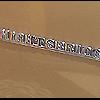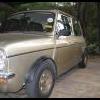Quiet some time ago I noticed that in the mpi-wiring diagram, four wires control the two injectors. I wondered if these were individually controlled and could they be exploited by running a four-injector manifold and whether there’d be any benefit in doing so.
 wiring diagram.bmp 750.05K
82 downloads
wiring diagram.bmp 750.05K
82 downloads
Fig1 – wiring diagram
So I built this:
 SAM_1707.JPG 2.25MB
157 downloads
SAM_1707.JPG 2.25MB
157 downloads
Fig2 - manifold build
What I was hoping for from this manifold with its directed injectors was better fuel distribution resulting in better mpg and power. As the ecu fires sequentially and fuel is delivered only when the valve is open it is possible that a venturi effect between the air and fuel may also be of some benefit even though the drawn fluid would change as the revs rise, but either way it had to be a good thing. A couple of e-mails to Mike Theaker, who was kind enough to entertain me, ensured that the right injector was firing at the right valve. He also gave an opinion on a diagram I made to ensure that my thinking on how the mpi injectors fire was correct, it wasn’t, but more on that later. The pin out for the MEMS 2J ecu turned out to be straight forward, On the red connector
B12 injector 1
B13 injector 2
B14 Injector 3
B35 Injector 4
The way an mpi fires its injectors is this:
 Std mpi injection.bmp 587.54K
95 downloads
Std mpi injection.bmp 587.54K
95 downloads
Fig 3 - mpi injector pulse
Ok so it’s a bit more complicated than that, the start/stop moves around a little according to the map but it is the basic idea. As an aside, if I were to design an efi system I’d seriously look into the potential of using venturi from the injectors to pressurise the valve chamber prior to opening, and as they’d be firing anyway you might get some boost for free. A bit like this:
 venturi injection.bmp 475.28K
58 downloads
venturi injection.bmp 475.28K
58 downloads
Fig 4 – venturi boost
And it ran with four individually controlled injectors
I now wonder whether a cross flow head could be fuelled by the standard mpi ecu? More research needs to be done before that’s answered, I’d need to know that there are four pulses across the whole of the rev range under all loads and if opposing pulses are equal, from the times given on page 36 they might not be. I’m thinking of getting one of these http://www.ebay.co.u...984.m1423.l2649 but I don’t know if it’ll give me accurate enough data, opinions are welcome.
In the meantime I’m re-designing the manifold so that the injector angles are brought in a little and hopefully solve the poor running as I don’t want to live without four injectors, it just feels asthmatic since I put my old manifold back on.
Now about that incorrect diagram I mentioned earlier. From reading about the way the mpi works with its bi-directional pulse width stretching from a definite start and end point and with my four injectors in mind I drew this. my mpi injection.bmp 628.24K
52 downloads
my mpi injection.bmp 628.24K
52 downloads
Fig 5 – my four-injector theory
Working like this under load.bmp 1.14MB
44 downloads
under load.bmp 1.14MB
44 downloads
Fig 6 – under load
This wouldn’t work with the mpis two injectors as there just isn’t time in the cycle to have that much control but, and it took me a little while to realise it. With four injectors it could be done and the duty cycle per injector is theoretically doubled to 50% when the pulses overlap to each other’s fixed point. With the current 460cc/min injectors that, according to various online calculators, is good for over 170bhp. Fat chance from a n/a 1275 mpi but it would give you the option of smaller injectors for better idle and fuel control with none of the starvation issues or power restrictions. This theory might be of use to those forced induction mini owners looking for an answer to fuel injecting high power motors. I know my theory is simplistic at best and there are advance, retarding and degree control problems but I just thought I’d throw it out there as I certainly don’t possess the knowledge, tools or talent to take it further. If it is feasible and you can make a plug and play ecu for the mpi mini running this theory I have the manifold to suit.
Dylan8660.
Edited by Dylan8660, 18 March 2012 - 02:11 PM.





















